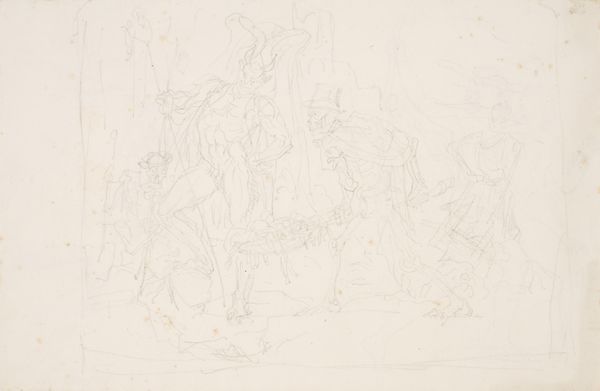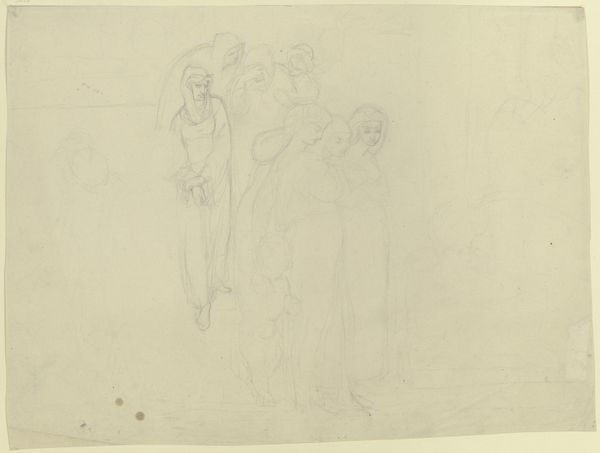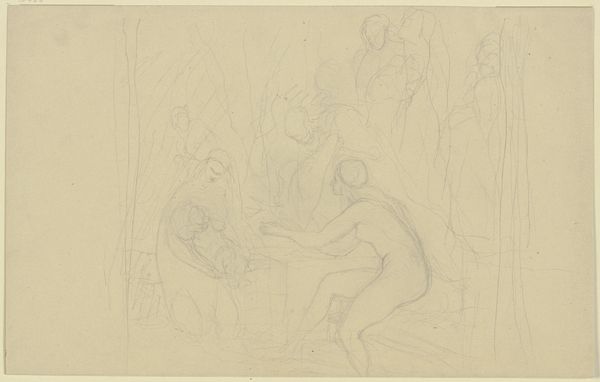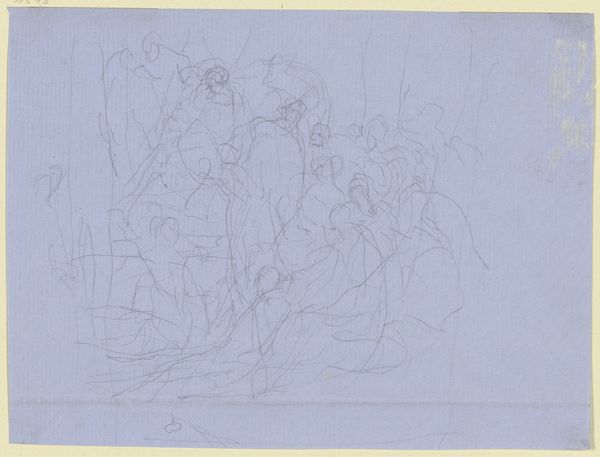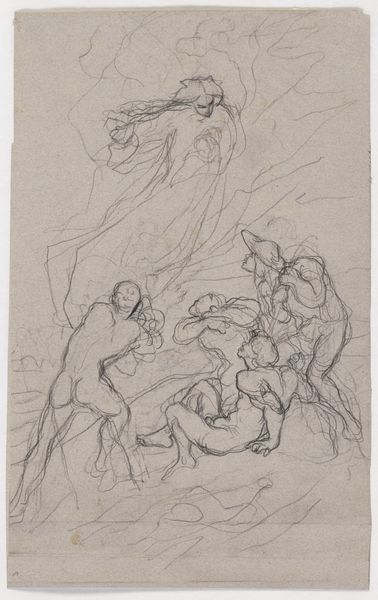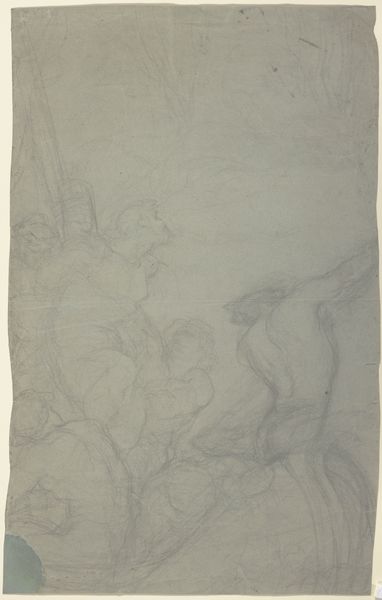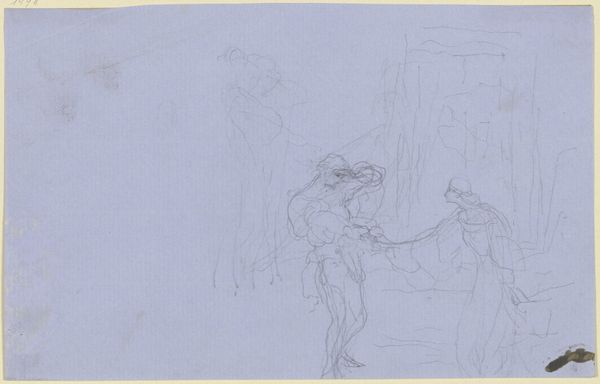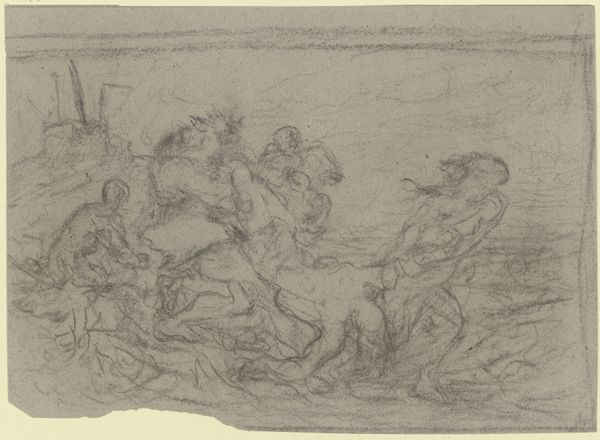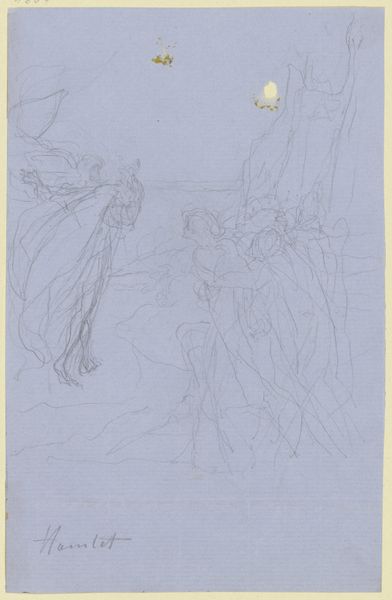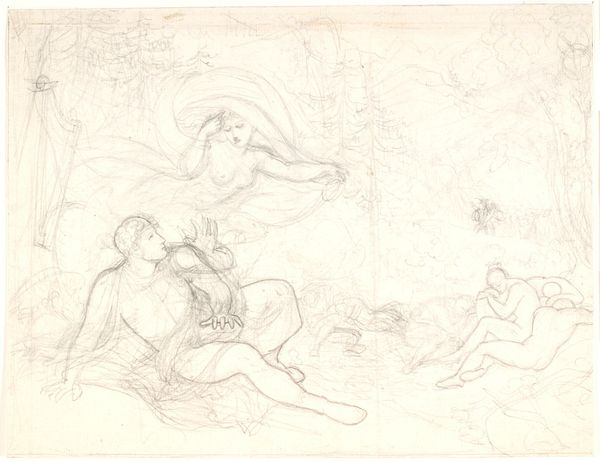
drawing, paper, pencil
#
drawing
#
narrative-art
#
figuration
#
paper
#
romanticism
#
pencil
#
history-painting
Copyright: Public Domain
Editor: This drawing, "Sterbender, gestützt von einer Frau, links ein trauernder Krieger," is by Victor Müller and resides here at the Städel Museum. It's rendered in pencil on paper, and evokes a feeling of somber reflection, a story untold. What's your read on this piece? Curator: The first thing that strikes me is the process itself: the immediacy of pencil on paper, a direct record of Müller's hand at work. He's depicting a historical or literary scene, and what interests me is how the very act of drawing – the physical labor, the repetitive strokes – connects him to the figures he portrays. Where did he source this paper? Did he sketch it live? These material questions highlight its creation as a constructed thing, challenging any notion of it simply being a 'window' into another time. Editor: I see what you mean. The rough, almost sketch-like quality underscores its creation. It feels like the means are exposed, in contrast to say, a finished oil painting trying to hide its origins. Curator: Exactly. This piece embodies Romanticism through its focus on emotion and historical subject matter, but let's not forget the labor embedded in creating this work. Consider the graphite; mined, processed, formed into a pencil. Even in a sketch like this, the web of production is vast and largely invisible, and deserves investigation. Does understanding its origin change how we value the 'art'? Editor: Absolutely, it changes my perspective. I was initially focused on the narrative, the suffering, the figures' emotional states. But now I'm also thinking about the act of *making* and what that adds. Curator: And that act of making, viewed materially, expands the boundaries of what we consider "art" and challenges traditional distinctions between artistic skill and manual labour, elevating our view of work. What else have you noticed now? Editor: Thinking about process has actually highlighted how unresolved it seems. Perhaps its value comes not just from the emotion but in bearing the trace of artistic work. Curator: Precisely, we gain insight into both process and production by analyzing those very means, offering critical reflection on what might be missed in more traditional approaches.
Comments
No comments
Be the first to comment and join the conversation on the ultimate creative platform.

